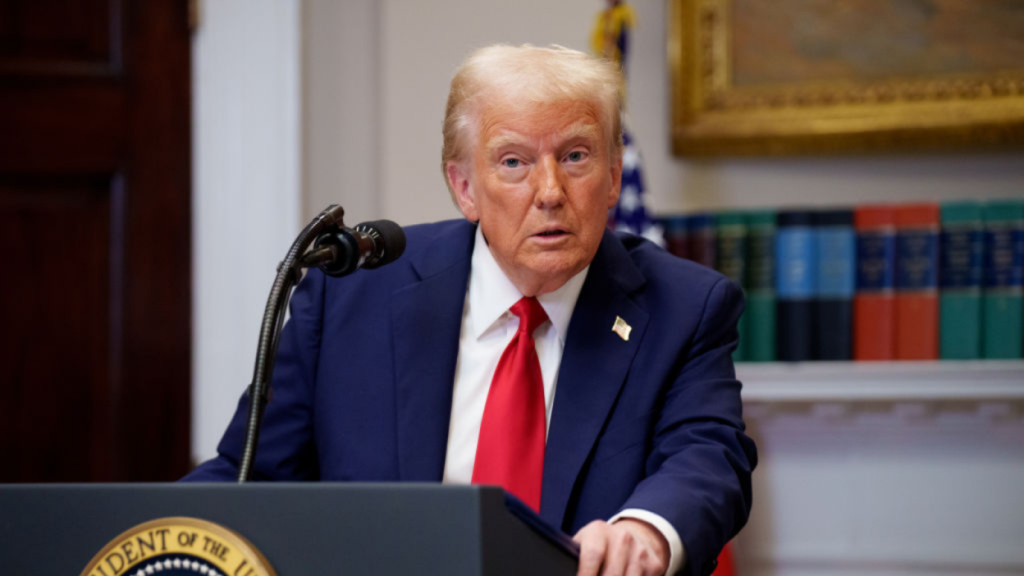
In a move that has sent shockwaves through the nation, President Donald Trump’s latest executive order has left Americans scrambling to make sense of a world where gender is no longer just a personal identity—it’s now a government decree. All Americans are now AFBT—Assigned Female By Trump, a controversial new label that’s making waves in legal, social, and cultural circles.
U.S. President Donald Trump wasted no time in signing a slew of executive orders after his inauguration on Monday, delaying the TikTok ban, initiating a withdrawal from the Paris climate agreement, and establishing the Elon Musk-led Department of Government Efficiency (“DOGE“).
But it seems that, amidst all this action, Trump may have also technically made everyone in the U.S. a woman.
The Executive Order on Gender Identity
Entitled “Defending Women from Gender Ideology Extremism and Restoring Biological Truth to the Federal Government,” Trump’s executive order concerning gender identity states that the U.S. government will only recognize two sexes: male and female. It goes further by providing explicit definitions for each, specifying how these definitions should be applied in all legal contexts.
“‘Sex’ shall refer to an individual’s immutable biological classification as either male or female,” the order declares. “‘Female’ means a person belonging, at conception, to the sex that produces the large reproductive cell. ‘Male’ means a person belonging, at conception, to the sex that produces the small reproductive cell.”
While Trump’s goal to impose a “binary nature of sex” may seem straightforward, the specific wording, technicalities, and applications of this executive order are raising complex questions. Conception, defined as the point when sperm and egg join (also known as fertilization), is where the order’s claims about sex and biology start to unravel.
Regardless of whether a fetus has XX, XY, or another chromosomal pattern, all human fetuses’ sex organs are identical at conception, in that they have none. Fetal development proceeds similarly for all embryos until about six to seven weeks after conception, at which point the Y chromosome typically induces the development of testes. If a Y chromosome does not express itself in this way, the fetus will continue to develop female genitalia.
This technical detail raises serious concerns about the practical implications of Trump’s executive order. Can we define gender so rigidly when the reality of biological development is far more complex? Will these definitions be enough to account for the natural diversity of human biology and gender?
Trump’s Executive Order on Sex Ignores Intersex People
One of the most glaring oversights in the executive order is its failure to address the complexities of intersex individuals. Intersex people, those born with biological characteristics that do not fit typical definitions of male or female, are left out of the conversation entirely.
It’s possible that Trump’s executive order intended to impose reliance on chromosomes rather than physical sexual organs. Most males have XY chromosomes while most females have XX, and these are present at conception. However, the executive order makes no mention of chromosomes, and more importantly, does not address how intersex people might be classified if this were the case.
Intersex individuals, whose sex characteristics might not align with traditional male or female categories, face significant challenges when it comes to legal and medical recognition. By ignoring this reality, Trump’s order essentially erases a group of people who don’t fit neatly into the binary categories of male and female.
Intersex Advocacy Response
“The Trump administration purports to talk about ‘biological realities’ but demonstrates that they lack any understanding of the relevant science,” said intersex advocacy group interACT in response to the executive order.
“A person with ovotestes (both ovarian and testicular tissue) may produce both sperm and ova. Would the Executive Order grant them both ‘male’ and ‘female’ category membership? On the other hand, a person born without gonads (gonadal agenesis), or with gonadal tissue that does not differentiate into functioning testes or ovaries (gonadal dysgenesis), may be considered neither male nor female if these nonsensical definitions are applied.”
Even when a person does have XX or XY chromosomes, they aren’t always expressed in the typical way. For example, people with Swyer syndrome have female reproductive structures while also having XY chromosomes. Similarly, people with Complete Androgen Insensitivity have external female sex characteristics, XY chromosomes, and internal male sex organs. Strict adherence to chromosomes would categorize these people as male, while looking to external appearances would have them assigned female.
A Nation Divided
The executive order has stirred fierce debate about personal identity and the role of government in defining it. Critics argue that this move is an attempt to erase the complexities of gender and biological science, while supporters see it as a step toward restoring traditional values.
For some, Trump’s decision to make everyone AFBT is an imposition on individual freedoms. For others, it is seen as a return to a simpler, binary approach to gender that they believe reflects “biological truth.”
The Debate Continues
As this landmark executive order continues to ripple across the nation, the questions grow: What does it mean to be assigned to a gender by the government? Will this executive order truly define the future of gender identity in America, or is it just another attempt to reshape personal freedoms?
This bold, controversial decision will undoubtedly remain in the spotlight, and as Americans navigate its far-reaching consequences, it’s clear that the debate over gender, identity, and government power is far from over.
Stay tuned as we continue to track the evolving story surrounding Trump’s executive order and its potential impact on every American.
